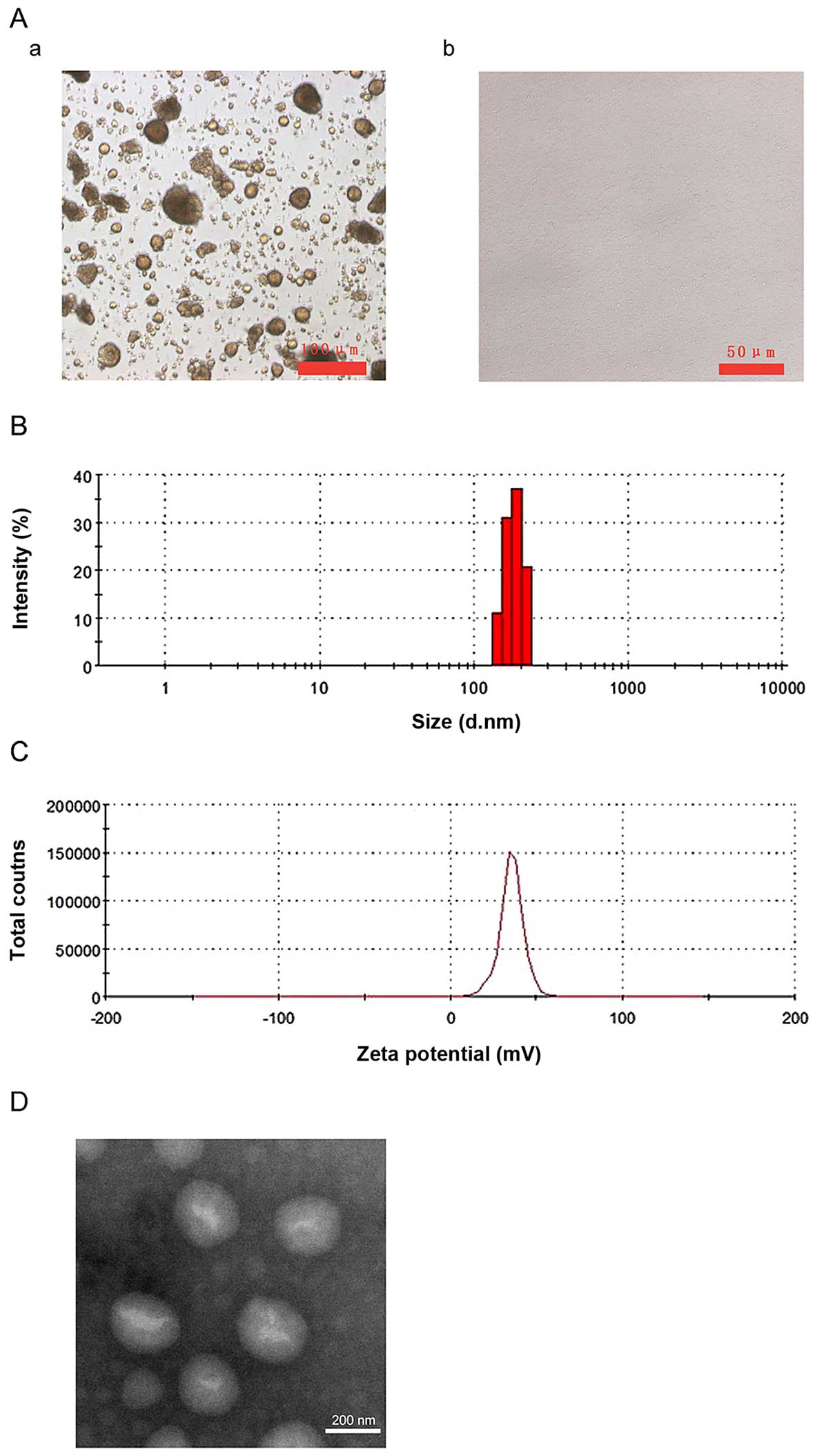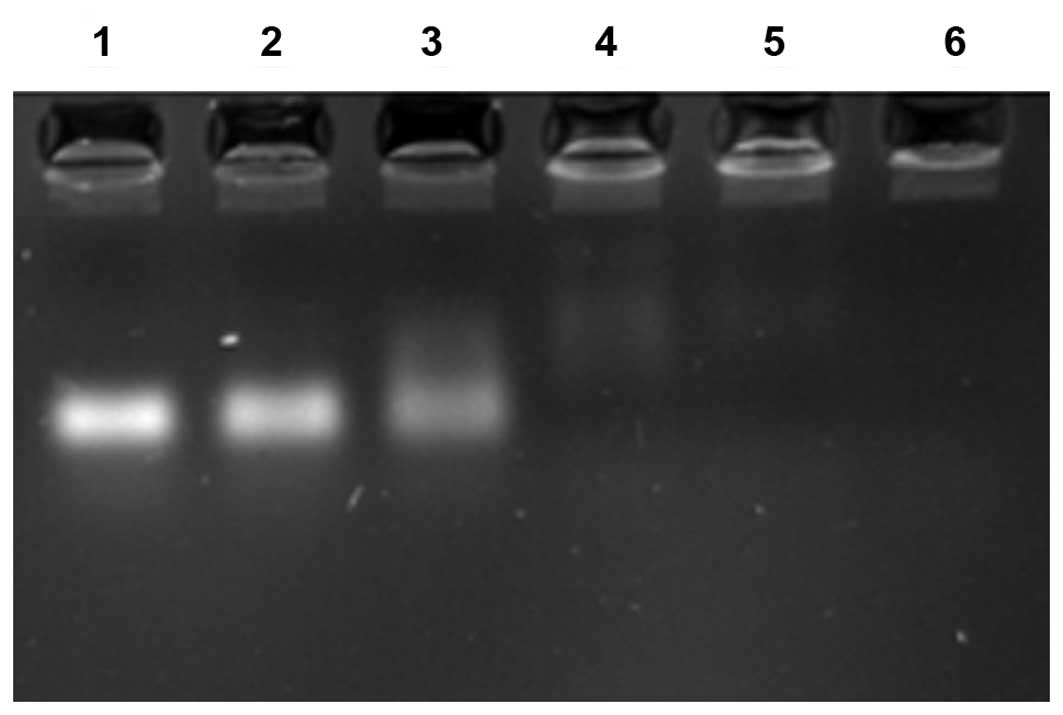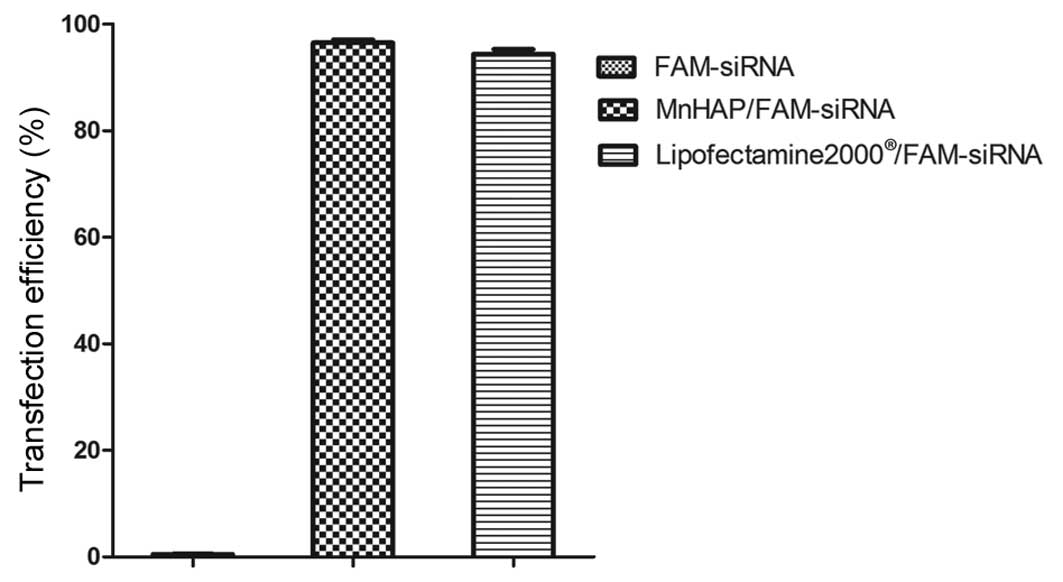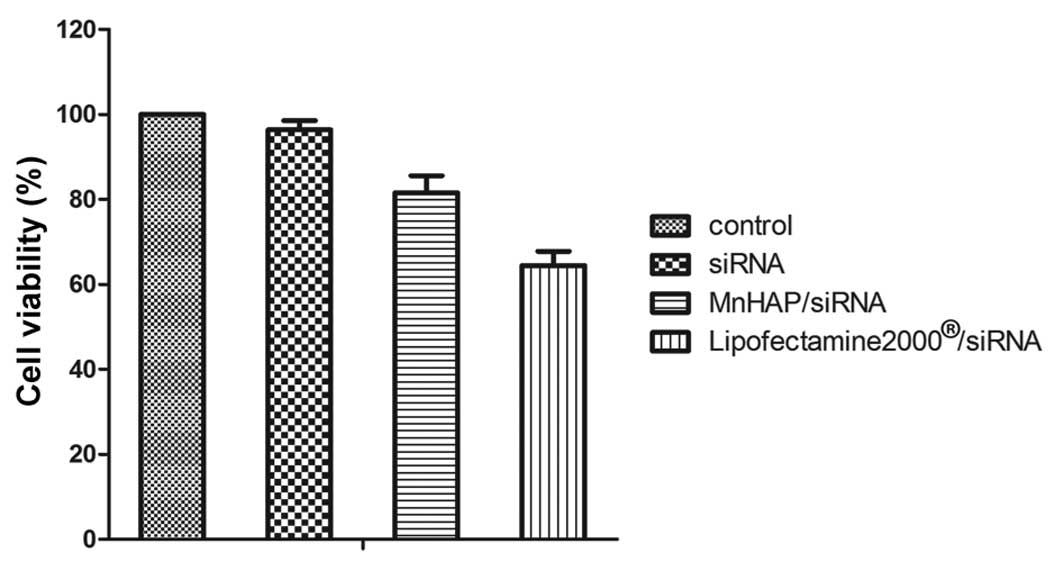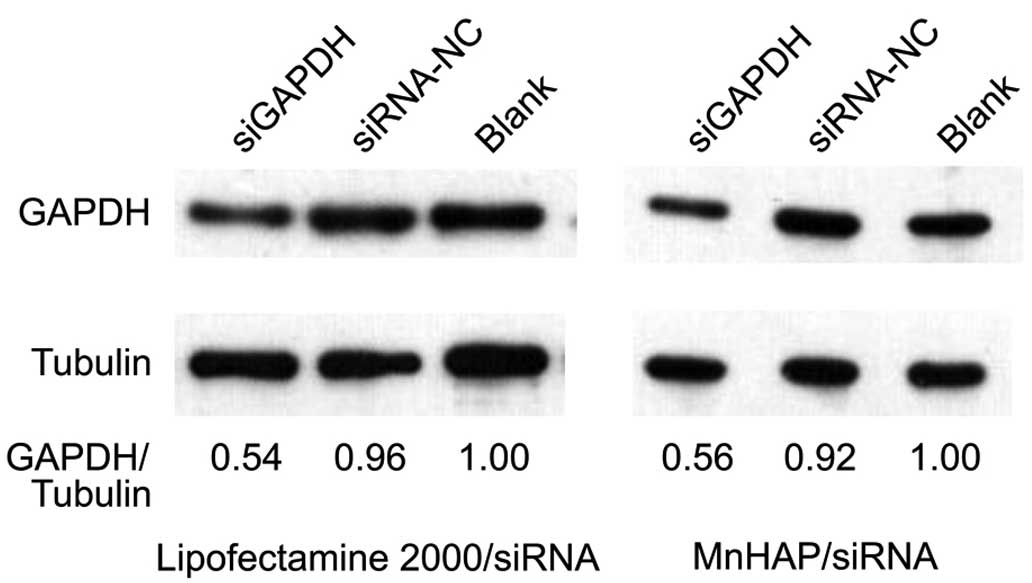|
1
|
Elbashir SM, Harborth J, Lendeckel W,
Yalcin A, Weber K and Tuschl T: Duplexes of 21-nucleotide RNAs
mediate RNA interference in cultured mammalian cells. Nature.
411:494–498. 2001. View
Article : Google Scholar : PubMed/NCBI
|
|
2
|
Akhtar S and Benter IF: Nonviral delivery
of synthetic siRNAs in vivo. J Clin Invest. 117:3623–3632. 2007.
View Article : Google Scholar : PubMed/NCBI
|
|
3
|
Yi Y, Hahm SH and Lee KH: Retroviral gene
therapy: Safety issues and possible solutions. Curr Gene Ther.
5:25–35. 2005. View Article : Google Scholar : PubMed/NCBI
|
|
4
|
Douglas KL: Toward development of
artificial viruses for gene therapy: A comparative evaluation of
viral and non-viral transfection. Biotechnol Prog. 24:871–883.
2008.PubMed/NCBI
|
|
5
|
Berlin A, Cohen JL and Goldberg DJ:
Calcium hydroxylapatite for facial rejuvenation. Semin Cutan Med
Surg. 25:132–137. 2006. View Article : Google Scholar : PubMed/NCBI
|
|
6
|
Afifi AM, Gordon CR, Pryor LS, Sweeney W,
Papay FA and Zins JE: Calcium phosphate cements in skull
reconstruction: A meta-analysis. Plast Reconstr Surg.
126:1300–1309. 2010. View Article : Google Scholar : PubMed/NCBI
|
|
7
|
Aoki H, Aoki H, Kutsuno T, Li W and Niwa
M: An in vivo study on the reaction of hydroxyapatite-sol injected
into blood. J Mater Sci Mater Med. 11:67–72. 2000. View Article : Google Scholar
|
|
8
|
Ashokan A, Chandran P, Sadanandan AR,
Koduri CK, Retnakumari AP, Menon D, Nair S and Koyakutty M:
Development and haematotoxicological evaluation of doped
hydroxyapatite based multimodal nanocontrast agent for
near-infrared, magnetic resonance and X-ray contrast imaging.
Nanotoxicology. 6:652–666. 2012. View Article : Google Scholar
|
|
9
|
Hou CH, Hou SM, Hsueh YS, Lin J, Wu HC and
Lin FH: The in vivo performance of biomagnetic hydroxyapatite
nanoparticles in cancer hyperthermia therapy. Biomaterials.
30:3956–3960. 2009. View Article : Google Scholar : PubMed/NCBI
|
|
10
|
Li G, Ye L, Pan J, et al: Antitumoural
hydroxyapatite nanoparticles-mediated hepatoma-targeted
trans-arterial embolization gene therapy: In vitro and in vivo
studies. Liver Int. 32:998–1007. 2012. View Article : Google Scholar : PubMed/NCBI
|
|
11
|
Matsumoto T, Okazaki M, Inoue M, Yamaguchi
S, Kusunose T, Toyonaga T, Hamada Y and Takahashi J: Hydroxyapatite
particles as a controlled release carrier of protein. Biomaterials.
25:3807–3812. 2004. View Article : Google Scholar : PubMed/NCBI
|
|
12
|
Roy ME and Nishimoto SK: Matrix Gla
protein binding to hydroxyapatite is dependent on the ionic
environment: Calcium enhances binding affinity but phosphate and
magnesium decrease affinity. Bone. 31:296–302. 2002. View Article : Google Scholar : PubMed/NCBI
|
|
13
|
Uskoković V and Uskoković DP: Nanosized
hydroxyapatite and other calcium phosphates: Chemistry of formation
and application as drug and gene delivery agents. J Biomed Mater
Res B Appl Biomater. 96:152–191. 2011. View Article : Google Scholar
|
|
14
|
Gorbunoff MJ and Timasheff SN: The
interaction of proteins with hydroxyapatite. III. Mechanism. Anal
Biochem. 136:440–445. 1984. View Article : Google Scholar : PubMed/NCBI
|
|
15
|
Brigger I, Dubernet C and Couvreur P:
Nanoparticles in cancer therapy and diagnosis. Adv Drug Deliv Rev.
54:631–651. 2002. View Article : Google Scholar : PubMed/NCBI
|
|
16
|
Khosravi-Darani K, Mozafari MR, Rashidi L
and Mohammadi M: Calcium based non-viral gene delivery: An overview
of methodology and applications. Acta Med Iran. 48:133–141.
2010.PubMed/NCBI
|
|
17
|
Zhao Y, Zhang Y, Ning F, Guo D and Xu Z:
Synthesis and cellular biocompatibility of two kinds of HAP with
different nanocrystal morphology. J Biomed Mater Res B Appl
Biomater. 83:121–126. 2007. View Article : Google Scholar : PubMed/NCBI
|
|
18
|
Puvvada N, Panigrahi PK and Pathak A: Room
temperature synthesis of highly hemocompatible hydroxyapatite,
study of their physical properties and spectroscopic correlation of
particle size. Nanoscale. 2:2631–2638. 2010. View Article : Google Scholar : PubMed/NCBI
|
|
19
|
Sokolova VV, Radtke I, Heumann R and Epple
M: Effective transfection of cells with multi-shell calcium
phosphate-DNA nanoparticles. Biomaterials. 27:3147–3153. 2006.
View Article : Google Scholar : PubMed/NCBI
|
|
20
|
Chen L, Mccrate JM, Lee JC and Li H: The
role of surface charge on the uptake and biocompatibility of
hydroxyapatite nanoparticles with osteoblast cells. Nanotechnology.
22:1057082011. View Article : Google Scholar : PubMed/NCBI
|
|
21
|
Slósarczyk A, Szymura-Oleksiak J and Mycek
B: The kinetics of pentoxifylline release from drug-loaded
hydroxyapatite implants. Biomaterials. 21:1215–1221. 2000.
View Article : Google Scholar : PubMed/NCBI
|
|
22
|
Liu T, Tang A, Zhang G, Chen Y, Zhang J,
Peng S and Cai Z: Calcium phosphate nanoparticles as a novel
nonviral vector for efficient transfection of DNA in cancer gene
therapy. Cancer Biother Radiopharm. 20:141–149. 2005. View Article : Google Scholar : PubMed/NCBI
|
|
23
|
Poulain L, Ziller C, Muller CD, Erbacher
P, Bettinger T, Rodier JF and Behr JP: Ovarian carcinoma cells are
effectively transfected by polyethylenimine (PEI) derivatives.
Cancer Gene Ther. 7:644–652. 2000. View Article : Google Scholar : PubMed/NCBI
|
|
24
|
Liu C, Zhang P, Zhai X, Tian F, Li W, Yang
J, Liu Y, Wang H, Wang W and Liu W: Nano-carrier for gene delivery
and bioimaging based on carbon dots with PEI-passivation enhanced
fluorescence. Biomaterials. 33:3604–3613. 2012. View Article : Google Scholar : PubMed/NCBI
|
|
25
|
Lungwitz U, Breunig M, Blunk T and
Göpferich A: Polyethylenimine-based non-viral gene delivery
systems. Eur J Pharm Biopharm. 60:247–266. 2005. View Article : Google Scholar : PubMed/NCBI
|
|
26
|
Godbey WT, Wu KK and Mikos AG: Size
matters: Molecular weight affects the efficiency of
poly(ethylenimine) as a gene delivery vehicle. J Biomed Mater Res.
45:268–275. 1999. View Article : Google Scholar : PubMed/NCBI
|
|
27
|
von Harpe A, Petersen H, Li Y and Kissel
T: Characterization of commercially available and synthesized
polyethylenimines for gene delivery. J Control Release. 69:309–322.
2000. View Article : Google Scholar : PubMed/NCBI
|
|
28
|
Ashokan A, Menon D, Nair S and Koyakutty
M: A molecular receptor targeted, hydroxyapatite nanocrystal based
multi-modal contrast agent. Biomaterials. 31:2606–2616. 2010.
View Article : Google Scholar
|
|
29
|
Liu ZS, Tang SL and Ai ZL: Effects of
hydroxyapatite nanoparticles on proliferation and apoptosis of
human hepatoma BEL-7402 cells. World J Gastroenterol. 9:1968–1971.
2003.PubMed/NCBI
|
|
30
|
Kveton JF and Coelho DH: Hydroxyapatite
cement in temporal bone surgery: a 10 year experience.
Laryngoscope. 114:33–37. 2004. View Article : Google Scholar : PubMed/NCBI
|
|
31
|
Gratton SE, Ropp PA, Pohlhaus PD, Luft JC,
Madden VJ, Napier ME and DeSimone JM: The effect of particle design
on cellular internalization pathways. Proc Natl Acad Sci USA.
105:11613–11618. 2008. View Article : Google Scholar : PubMed/NCBI
|
|
32
|
Motskin M, Wright DM, Muller K, Kyle N,
Gard TG, Porter AE and Skepper JN: Hydroxyapatite nano and
microparticles: Correlation of particle properties with
cytotoxicity and biostability. Biomaterials. 30:3307–3317. 2009.
View Article : Google Scholar : PubMed/NCBI
|















